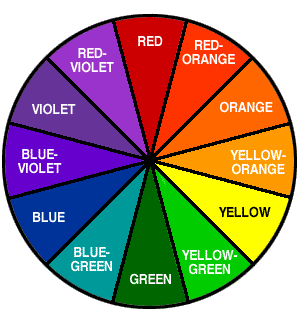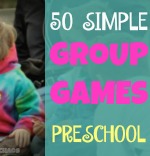History Comes Alive: How Ghost Tours Teach Kids About the Past
Cultivating an interest in the history of the past is a challenge for both parents and teachers, with more students than ever seemingly uninterested in a bygone era. These days, kids are increasingly drawn to technology, often enticed by the latest social media trend, popular app, or expensive new gadget. However, ghost tours can entice kids to learn about the history of the past.
With declining levels of engagement, curiosity, and enthusiasm in the classroom, more students report being bored or distracted than ever before, How can this be helped? One way might be reframing history in a different context to make it more engaging to students of all ages. Ghost tours can make history come alive again.
Many kids are drawn to the realm of the spooky and unknown, be they bewitched by the dark fairy tales of the Brothers Grimm, the animation of Tim Burton, or the supernatural stories of Goosebumps. This attraction is something that can be channeled to develop an interest in other subjects — history being one of the easiest.
Ways Ghost Tours Help Kids Learn About History
Ghost tours are an excellent way to breathe new life into the past, using storytelling, visual landmarks, and the lesser-told side of history to fuel a passion for the past!
Ghosts Make The Past Feel Current
Kids can feel disconnected from events that occurred hundreds of years ago, prompting a lack of interest in history. However, the introduction of ghosts makes the past feel ever-present, even going as far as to remind young learners that historic events have lingering effects on our modern world.
When you tell kids that the battle of Gettysburg resulted in 50,000 casualties, that number can be hard to comprehend. Yet when they hear of the legends of this brutal battle’s echoes continuing to bleed into the present day via ghostly cavalrymen and phantom soldiers, these statistics begin to feel more weighty.
Likewise, it may be difficult to get distracted kids interested in 300-year-old witch trials, until they hear that one of the accused supposedly cursed the town of Salem, leaving a bevy of ghosts to riddle the place where he was executed — now the site of Howard Street Cemetery.
Ultimately, ghost stories make the past feel alive through a lens that is both intriguing and dramatic, reinforcing the fact that events that happened long ago can still hold a lasting effect on the present world.
Storytelling Is A More Engaging Medium For Kids
Most teachers and caregivers recognize the tell-tale signs of a disinterested kid — squirming, chatting, distracting peers, or perhaps even trying to sneak a peek at a smartphone. That’s often because the information they're attempting to learn isn’t presented engaging them.
For many kids, storytelling is a more compelling medium than memorizing facts from books and slideshows. A ghost tour puts you in the actual context of history, crafting a sensory world around it. Kids can walk streets that have existed for a hundred years, imagine the people who once resided here while their guide recreates the past, and ask questions about history in real time.
Not to mention movement is especially beneficial for kids, as exercise can help children focus better in class, improving memory and mood — even if in small bursts. In this way, city walking tours can combine physical activity and history.
Haunted History Encourages an Interest in Historic Figures and Places
Although you might think ghost tours are all frights and scares, they often tie in historic elements in some way, whether discussing the effects of the Great Depression and Prohibition era on their city, recounting major events, or referencing renowned figures who impacted the area.
Along such tours, buildings and monuments are often used as visual cues, tying these landmarks to prominent people and significant events. Not only can this inspire an interest in architecture, museums, and monuments — it roots specific eras and historic events in the real world, making history feel more interactive.
Consider the White House. Legends of our 16th president's spirit haunting this historic dwelling stretch back more than a century, with Calvin Coolidge’s wife being the first person to report seeing Abraham Lincoln’s ghost. Additional sightings were common during Franklin D. Roosevelt's presidency, a time marked by the depression and war. And Lincoln isn’t even the only ghost here.
That old-domed building now seems a lot more interesting once you know the number of specters it is said to hold. And each and every one ties in with history in some way. This isn’t something tied solely to Washington, DC, either. No matter the place or period, history is filled with ghosts.
Ghost Stories Inspire Curiosity, Imagination, and Wonder
Not only do ghostly legends and lore promote an interest in the past, they kindle a passion for wonder. Ghost tours reinforce the idea that even the experts don't hold all the answers. There are still elements of this world waiting to be discovered, investigated deeper, or explored further.
It can be intriguing for younger generations to hear that not everything can be explained away, or to know that there are still mysteries to be solved. What happened to the lost colony of Roanoke? How did more than a hundred colonists disappear in the 16th century without a trace? Where did the myth of the vampire spawn from? Was it possibly early people’s attempts at explaining unknown diseases?
These questions can inspire an interest in history, science, literature, and even art. A fondness for the strange and spine-tingling can encourage kids to pick up new reads, be they the teen-focused Scary Stories To Tell In The Dark or the works of Edgar Allen Poe.
Spooky Tales Are Fun and Safe
History books are a valuable resource, but they are not the only medium for learning. Ghost tours are both entertaining and educational, fusing information with exciting stories and strange history. That excitement fuels learning, making historic events memorable and the past more fascinating.
If you’re worried about a ghost tour being too scary for younger audiences, know that tours are less intense than other horror media, focusing on the spooky and spectral rather than the gruesome. Unlike horror movies, which can have lasting effects on children and teens, ghost tours are entirely story-based.
While haunted houses might come with intense scares and films may be filled with disturbing imagery or gore, ghost tours deal with spooky topics in a lighter way — much like the way kids consume scary tales in their early ages (like listening to fairy tales or tales told around a campfire). Moreover, both ghost tours and ghost stories allow kids to experience spooky content in a safe environment — something beneficial to their development.
Ghost stories span many centuries and cultures, from the spooky works of Charles Dickens in Victorian England to spectral tales recorded by ancient Romans, like Pliny the Younger. Using these ghostly frameworks is a great way to foster an interest in the past and stimulate a passion for history for kids and teens. Ready to inspire an interest in history in your own child?
Consider seeing which ghost tours are available in your city and asking if the content is age-appropriate for kids. No tours nearby? Next time you take a family trip, try booking a ghost tour in your vacation destination. Not only will it help your child learn more about the locale, it will likely tie in countless historic events and figures relevant to your kids’ history class. You never know — you might even learn something yourself.






















